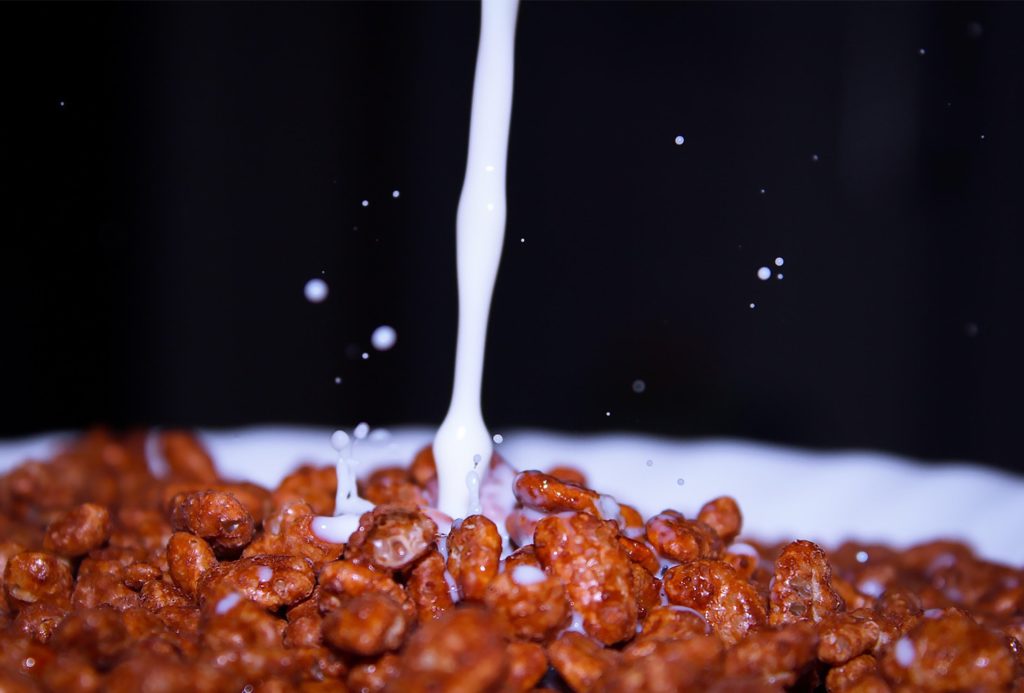All fields are required
Posted in Outbreaks & Recalls,Salmonella on June 15, 2018

Drop the spoon and save your milk for later, Kellogg’s Honey Smacks cereal has been recalled due to Salmonella. Here’s the scoop on your daily breakfast routine. Your Cereal May Not Be Safe!
Recall, Recall
On June 14th, Kellogg’s pulled Honey Smacks cereal off the shelves for contamination of Salmonella Mbandaka. This multi-state outbreak packs a crackling kick with reported infections in 31 states and 73 people sick, 24 of which have been hospitalized. As a product marketed towards children, and a staple in many household cabinets, the nature of this outbreak is even more troublesome. Not only has the spoiled cereal hit the states, there has been distribution to Costa Rica, Guatemala, Mexico, Guam, Tahiti, Saipan, and the Caribbean, making this a global issue.
As I’ve said before, there is a delay when it comes to consumption to CDC reports, by no fault of the CDC’s. It takes 12 to 72 hours before symptoms of Salmonella take place. After that, medical diagnosis must be obtained, then investigative work to determine where the sickness spawned. The current illnesses reported are from the dates March 3, 2018 to May 28, 2018. Those reported with Salmonella range in ages from less than one year to over 87; which, makes sense as Honey Smacks are popular for children, adult taste-buds salivate from the fond memories of this 1953 (once known as Sugar Smacks) treat.
Kellogg’s website boldly displays a linked banner announcing their “voluntary recall” of the cereal, while stores are safely following the CDC and FDA’s safety alert to remove Honey Smacks off the shelves. Kellogg’s distribution reach is far. This breakfast giant is manufactured in 19 countries and sold in about 160, so it’s no surprise a contamination can reach 31 states swiftly.
With Honey Smacks linked to the outbreak, a chain reaction of reports might occur. Kellogg’s is a secondary-sector business, meaning they retrieve raw materials from suppliers all over the map. Kellogg’s may have had a swift response to the Salmonella reports, but finding ground zero of this outbreak may take more time. Considering the manufacturer of Honey Smack’s is a third-party, the investigation will be a tedious undertaking and will have a host of trails to follow. The CDC will need to put in the overtime to follow these breadcrumbs.
Until then, it’s best to be safe rather than oh-so-very-sorry. Dig through your kitchen and discard or return your Honey Smacks. Sure, the children might give you a hard time for taking their beloved sugar-laden cereal to the trash, but you’ll have a much tougher night if you are forced to the hospital with Salmonella settling inside your kid’s body.
Now, it’s not every box at risk. Specifically, the recalled cereal is for 15.3 oz. and 23 oz. with “best if used by” dates of June 14th, 2018 to June 14th, 2019. The 15.3 oz. packages recalled are labeled with UPC code 38000 39103, and the 23 oz. boxes are labeled with UPC code 38000 14810. The CDC warns that even if you’ve eaten recalled Honey Smacks and you are not sick, discard the cereal anyway. For the organizing masters who pour cereal into storage containers, you’ll need to toss that out too. Without the box, you can’t be sure whether you are eating Salmonella for breakfast. Don’t worry, you can keep the container, but make sure to wash it with warm soapy water before you use it again.
Avoiding Salmonella, Your Cereal May Not Be Safe
So, how do you avoid Salmonella? It’s relatively easy for most situations. Obviously, unknowingly ingesting it in your cereal was not something you could control, and doesn’t hang on your head. However, there are other sources for this type of infection. Shall I, explain. I think so.
Salmonella buries in the intestinal tract of humans and animals, and remains infectious in the excrement. It is most often found in raw meats and dairy products, but is also found in fruits and vegetables due to contaminated soil and water that the plant is grown in (as seen with the recent Melon outbreak). Another source of contamination is the food handlers. Once again, the “Employees must was hands” signs reveal their importance. Once a person has contracted non-typhoidal Salmonella, symptoms last approximately 4 to 7 days. Typhoidal Salmonella tells a different story of recovery, but lucky for us that is not the risk with Honey Smacks. With Non-typhoidal Salmonella, most healthy people recover from the ailment without medical treatment; however, it is still vital to see a doctor for diagnosis. I don’t know your medical history, and I certainly can’t treat you. So, go to your medical professional, and get better care than online self-diagnosis. Plus, your report to the CDC could save a lot of people troubled nights if you prove an outbreak in your area. Consider it your good deed to yourself and others.
So, what can you do?
It’s simple.
Following these steps severely diminishes the possibility of contracting Salmonella. Though, this case happens to be relatively unavoidable, unless you dislike Honey Smacks, but that seems to be the less popular opinion. Just be aware of your body, and how you are doing. Salmonella comes with vomiting, diarrhea, and a fever. So, if you exhibit any of these signs, get pro-active and seek help. Early medical help could mean the difference between a pretty bad week and major long-term complication.
Good luck out there, and safe eating to all!
MakeFoodSafe is providing ongoing coverage on the outbreak and recall linked to Salmonella contamination in Kellogg’s Honey Smacks. Check back for updates as they unfold in the coming days and weeks. Drop the spoon and save your milk for later, your Cereal May Not Be Safe!
By: Heaven Bassett, Contributing Writer (Non-Lawyer)